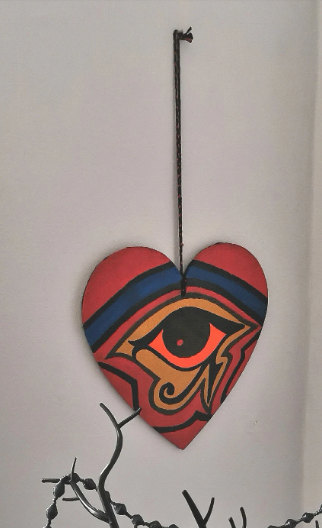The Eye of Ra has its origins in the mythology surrounding Ra, the sun god and one of the most significant deities in ancient Egypt. Ra was believed to be the creator of the world, the bringer of light, and the ruler of the heavens. The Eye, often personified as a separate entity, was both an extension of Ra's power and an independent force.One of the most well-known myths concerning the Eye of Ra describes it as a vengeful aspect of the god, sent out to punish humanity when they defied his authority. In this story, Ra, feeling that mankind had become disobedient and disrespectful, sent the Eye—often associated with the goddess Sekhmet—to bring destruction upon them. Sekhmet, depicted as a lioness, unleashed such fury that she nearly annihilated all of humanity. Ra, realizing the devastation, tricked her into drinking beer dyed red to resemble blood, which intoxicated her and stopped the massacre. This myth underscores the duality of the Eye—it is both a weapon of divine wrath and a force that must be controlled to prevent chaos.
Another significant aspect of the Eye of Ra is its role in Ra’s daily journey. According to Egyptian belief, Ra traveled across the sky in a solar boat during the day and navigated through the underworld at night. The Eye served as a protective force, ensuring Ra's safe passage by warding off threats, particularly the serpent god Apep, who sought to destroy the sun god and plunge the world into darkness. This representation reinforced the idea of the Eye as a guardian and protector of cosmic order.
The Eye of Ra carries multiple layers of meaning, reflecting the complexity of Egyptian religious beliefs. It is often mistaken for the Eye of Horus, another powerful symbol, but the two serve different purposes. While the Eye of Horus represents healing, restoration, and protection, the Eye of Ra is more closely associated with dominance, aggression, and divine retribution.Despite its fearsome reputation, the Eye of Ra was also seen as a positive force, providing protection to the pharaoh and the people. In many depictions, it is portrayed as a sun disk surrounded by a cobra (uraeus), symbolizing both the power of the sun and the ability to strike down enemies. This imagery was frequently used in amulets, temple carvings, and royal regalia to signify divine favor and protection.The Eye of Ra was also linked to several goddesses who embodied its different attributes. Sekhmet represented its destructive power, while Hathor and Bastet symbolized its nurturing and protective aspects. This association with multiple deities highlights the Eye’s multifaceted nature, demonstrating how it could be both a source of fear and comfort in Egyptian religion.
Beyond its role in mythology, the Eye of Ra played a significant part in the daily lives of ancient Egyptians. It was commonly used in religious rituals, tomb inscriptions, and protective amulets. The symbol was believed to ward off evil, safeguard the deceased in the afterlife, and ensure stability and prosperity.The influence of the Eye of Ra extends beyond ancient Egypt, finding echoes in later religious and cultural traditions. Its concept of a watchful, all-seeing force bears similarities to the “Eye of Providence” found in Christianity, often depicted as an eye within a triangle representing divine oversight. Likewise, the notion of an avenging or protective eye appears in various cultures, including Hinduism and Mesopotamian civilizations.In modern times, the Eye of Ra remains a popular symbol in art, literature, and popular culture. It frequently appears in movies, books, video games, and jewelry, where it is often associated with mysticism, power, and the arcane. The symbol has also been adopted in spiritual practices, with some people believing it offers protection against negative energy or malevolent forces.


